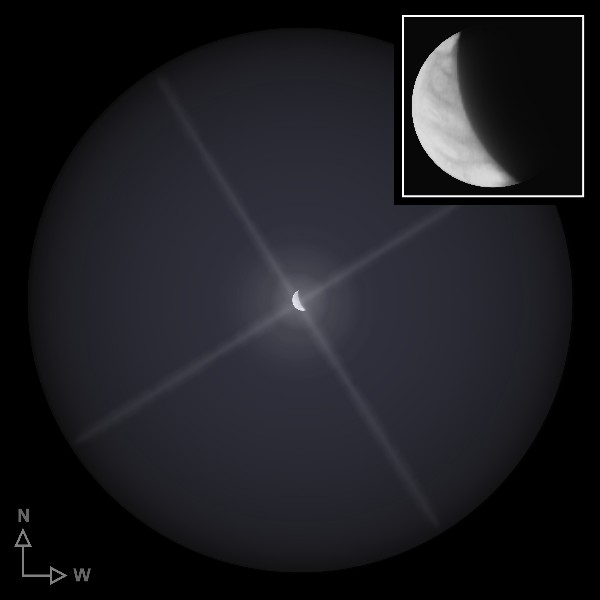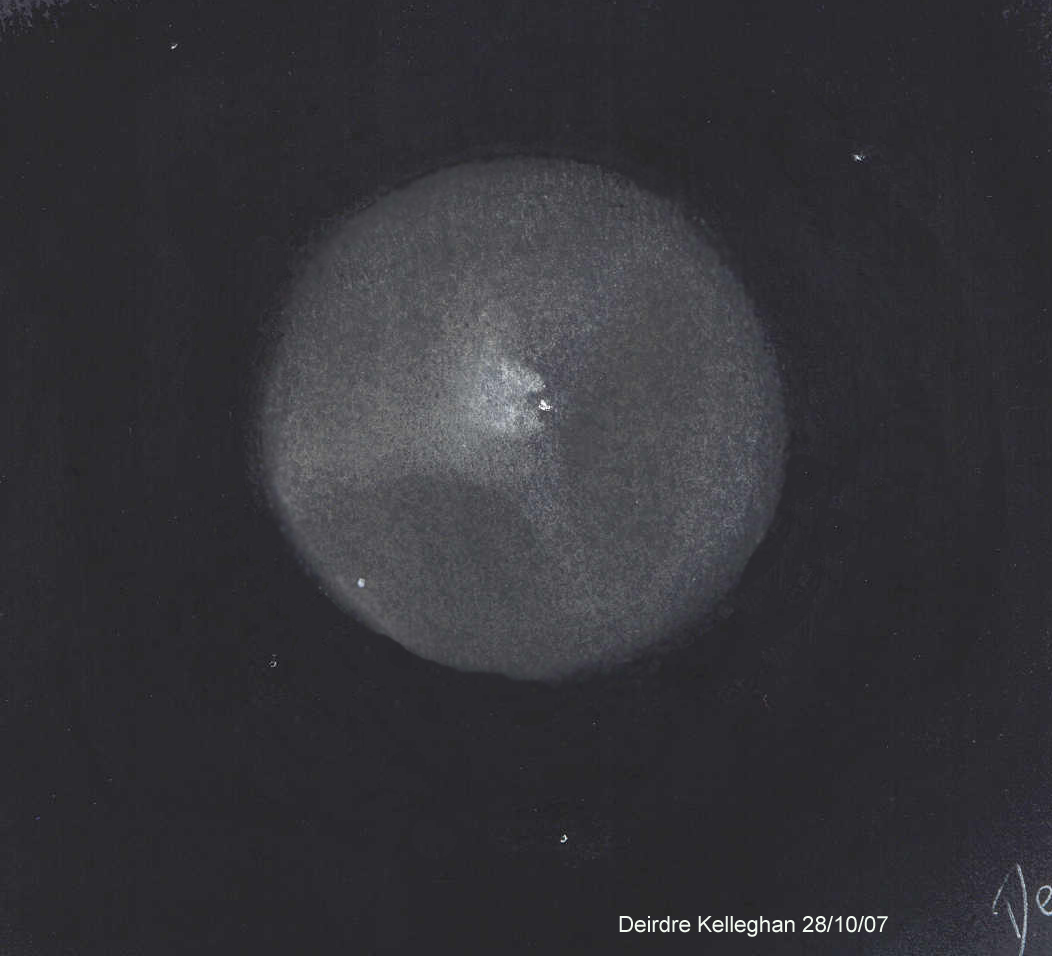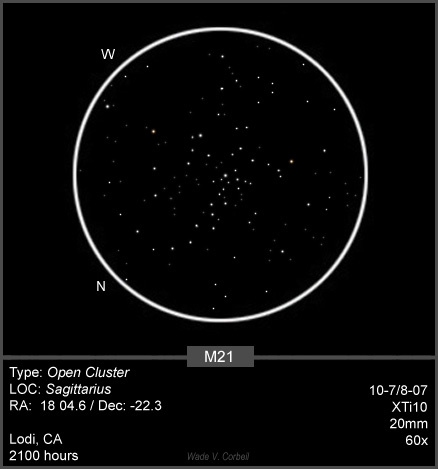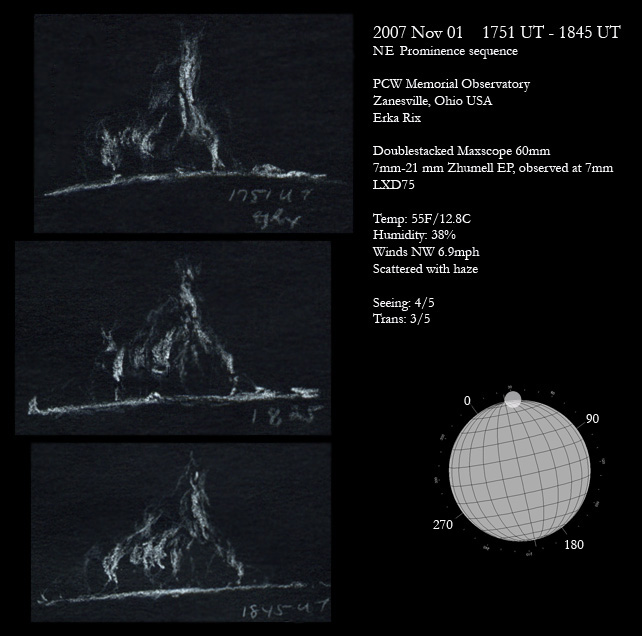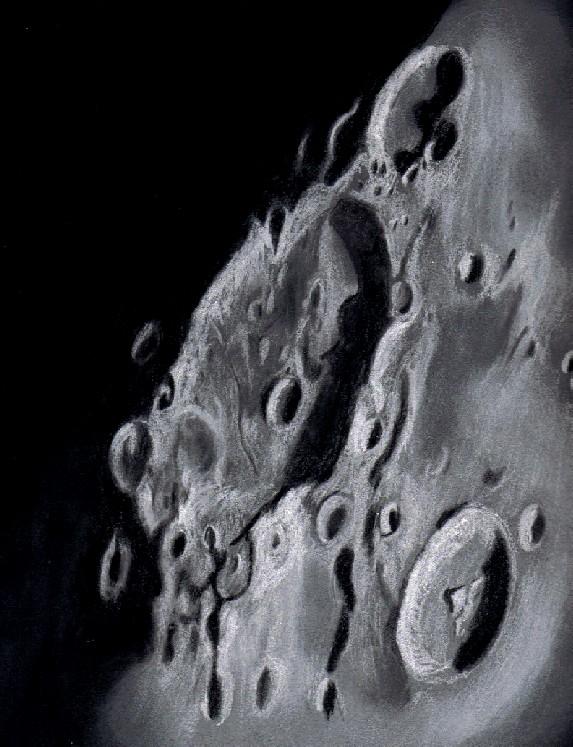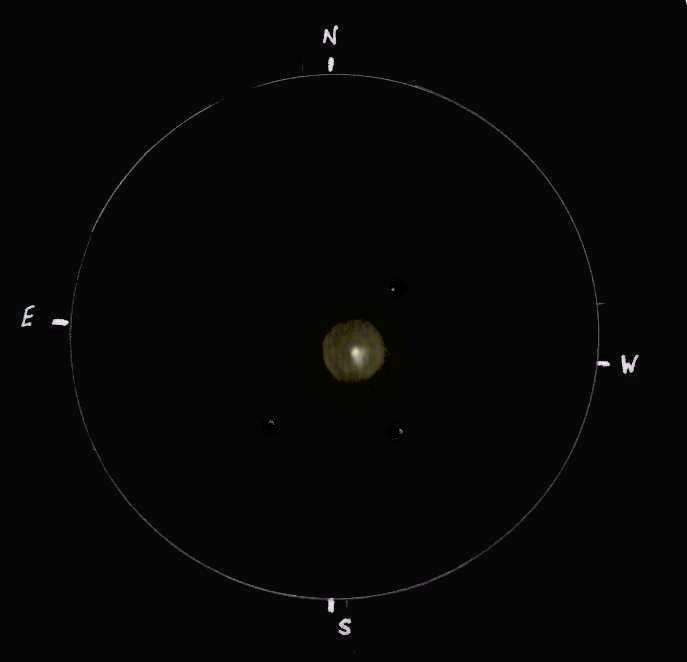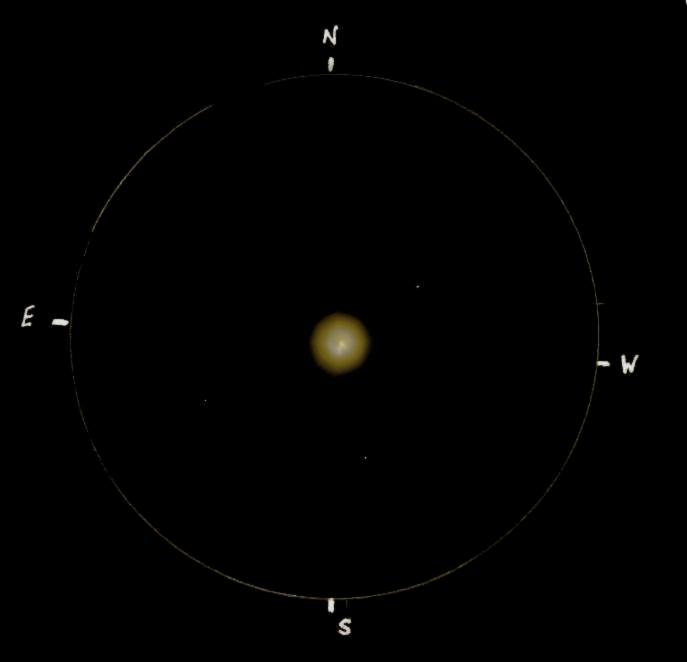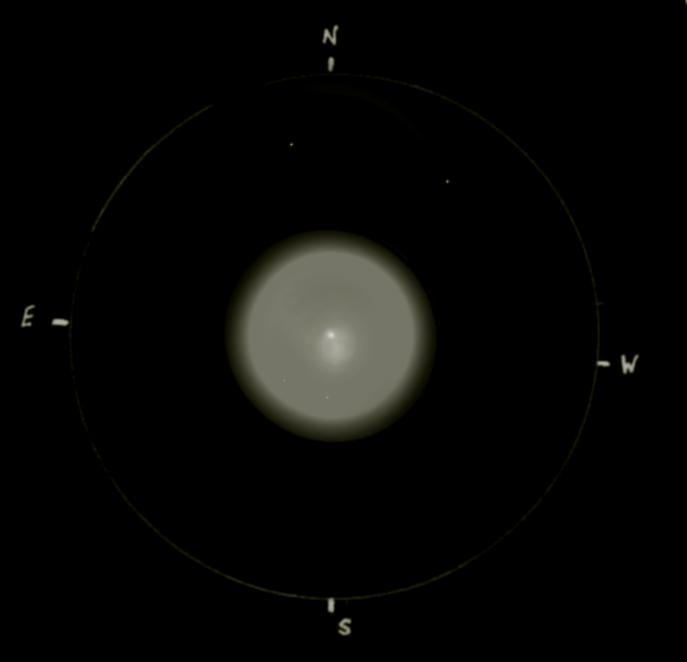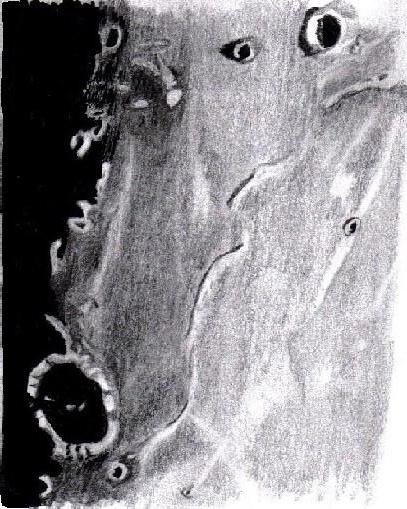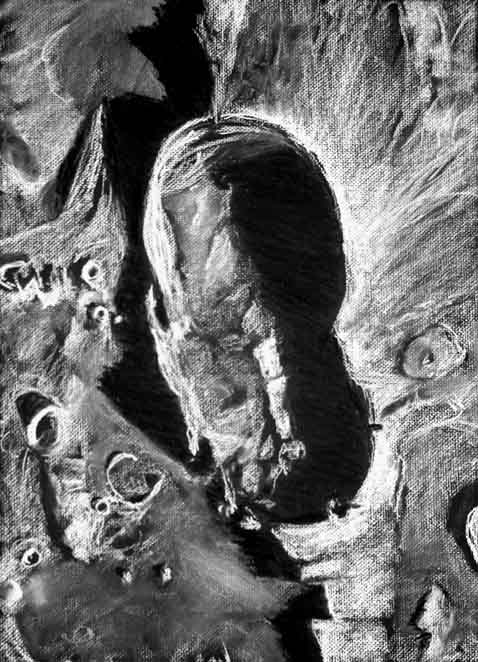
On October 30, site administrator, Rich Handy, lost his home to a fire. He and his family are ok, but as you can imagine he has a lot to deal with right now. Please keep him in your thoughts during this very difficult time. Until Rich feels ready to return to administering the site, I’ll do my best to keep things going. I’ve updated the submission page to include an email address to which I have access.
Rich has been very conscientious about not posting any of his own sketches here. I think this is an appropriate opportunity to dedicate the November 1, 2007 Astronomy Sketch of the Day to one of his many excellent Lunar sketches.
Hang in there Rich, we’re all pulling for you,
Jeremy Perez
Here are Rich’s notes about the beautiful surroundings of Hainzel, Hainzel A and Hainzel C:
In the south western quadrant of the Moon, amidst the heavily bombarded highland terra and adjacent to Lacus Timoris (the poetically named “Lake of Time”), lies the trio of complex overlapping craters, Hainzel, Hainzel A and C. A quick look at this grouping in this lighting may leave one with the mistaken impression that these three are the result of a single asteriod that broke into a couple of major chunks just prior to impact, resulting in the elongate structure without an obvious wall separating the two larger impacts. Despite that appearance, however, each crater was formed at a different epoch.
78 km Hainzel which comprises a good portion of the southern portion of the “fiddle” shaped complex, is a Nectarian era feature, formed sometime between 3,920 and 3,850 million years ago. In my sketch you can see that indeed, the lower crater has taken several impacts to it’s rim. In contrast, 38 km Haizel A above it, is a relatively youthful Erastosthenian era crater formed between 3,200 and 1,100 million years ago. Here again its youth can be gaged by the very fresh looking glacis, shown in my sketch as the ropey and branching area to the upper right of Hainzel A’s rim (the upper body of the fiddle). The drawing shows few superposed craters over this large area, a definite indicator of freshness. 19 km by 28 km Hainzel C is an Imbrium era crater formed during the gap in time between Hainzel and Hainzel A’s appearance between about 3,800 million and 3,200 million years ago. The light was not favorable for a good look at C, covered as much as it it was by deep shadow from it’s bigger brothers. Hainzel C is superposed on Hainzel. Previous views of C showed a damaged and disrupted floor and walls, most probably the result of the impact of A.
Here are the sketch details:
Subject: Hainzel, Hainzel A and C Rukl: 63
Date: 10-2-06 Time: 4:24 UT-5:43 UT
Seeing: Antoniadi III-IV Weather clear, light breeze
Lunation: 10.65 days Phase: 55.7 deg Colongitude: 39.5 deg
Illumination: 78.2%
Lib in Lat: +4 deg 55 min Lib. in Long: -5 deg 11 min
Telescope: 12″ Meade SCT, f/10
Binoviewers: W.O. Bino-P with 1.6X Nose piece
Eyepieces: 12.4 mm Meade series 4000 Super Plossls
Magnification: 393X
Sketch medium: White and black Conte’ Crayon on black
textured Strathmore paper.
Sketch size: 18″ x 24″

